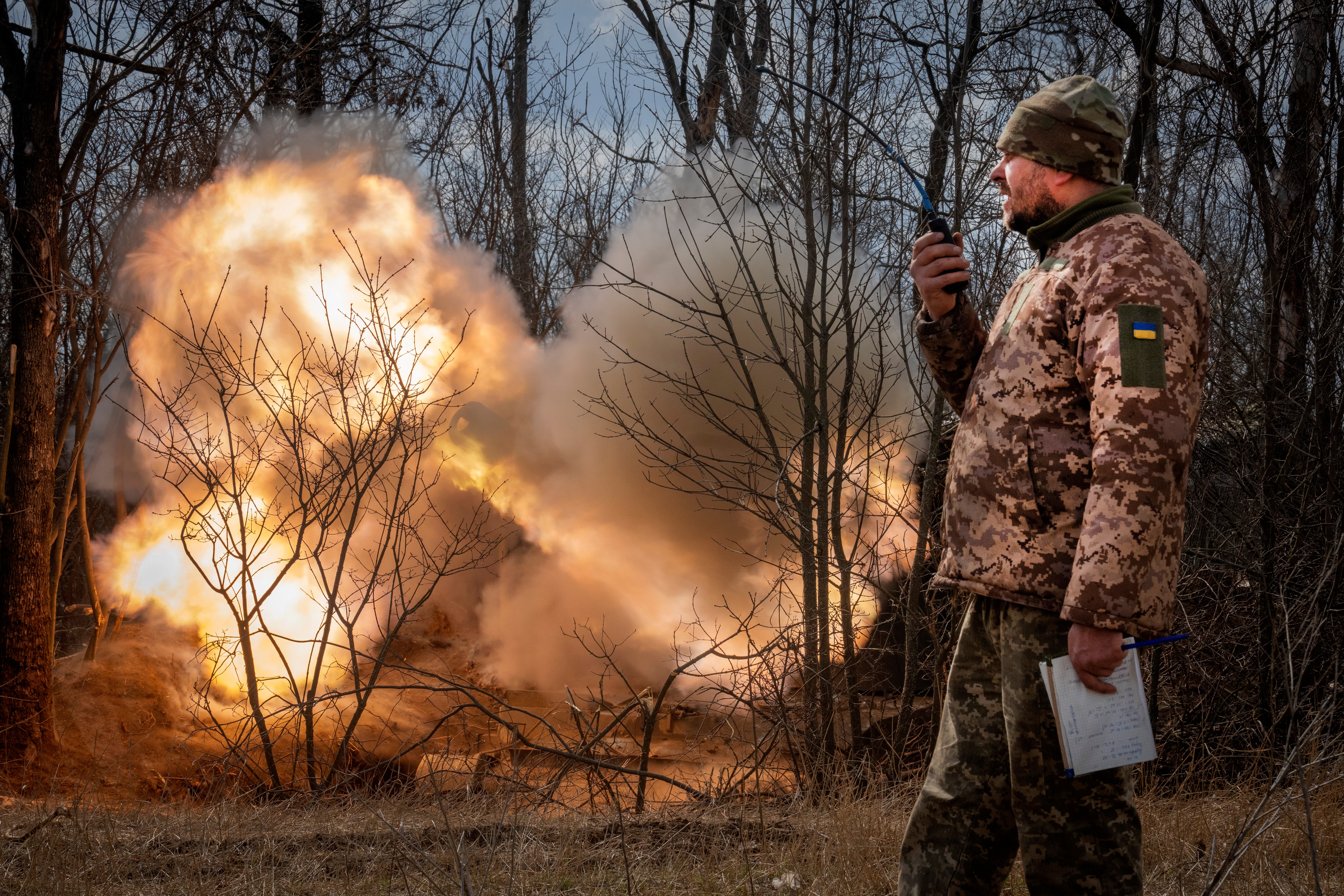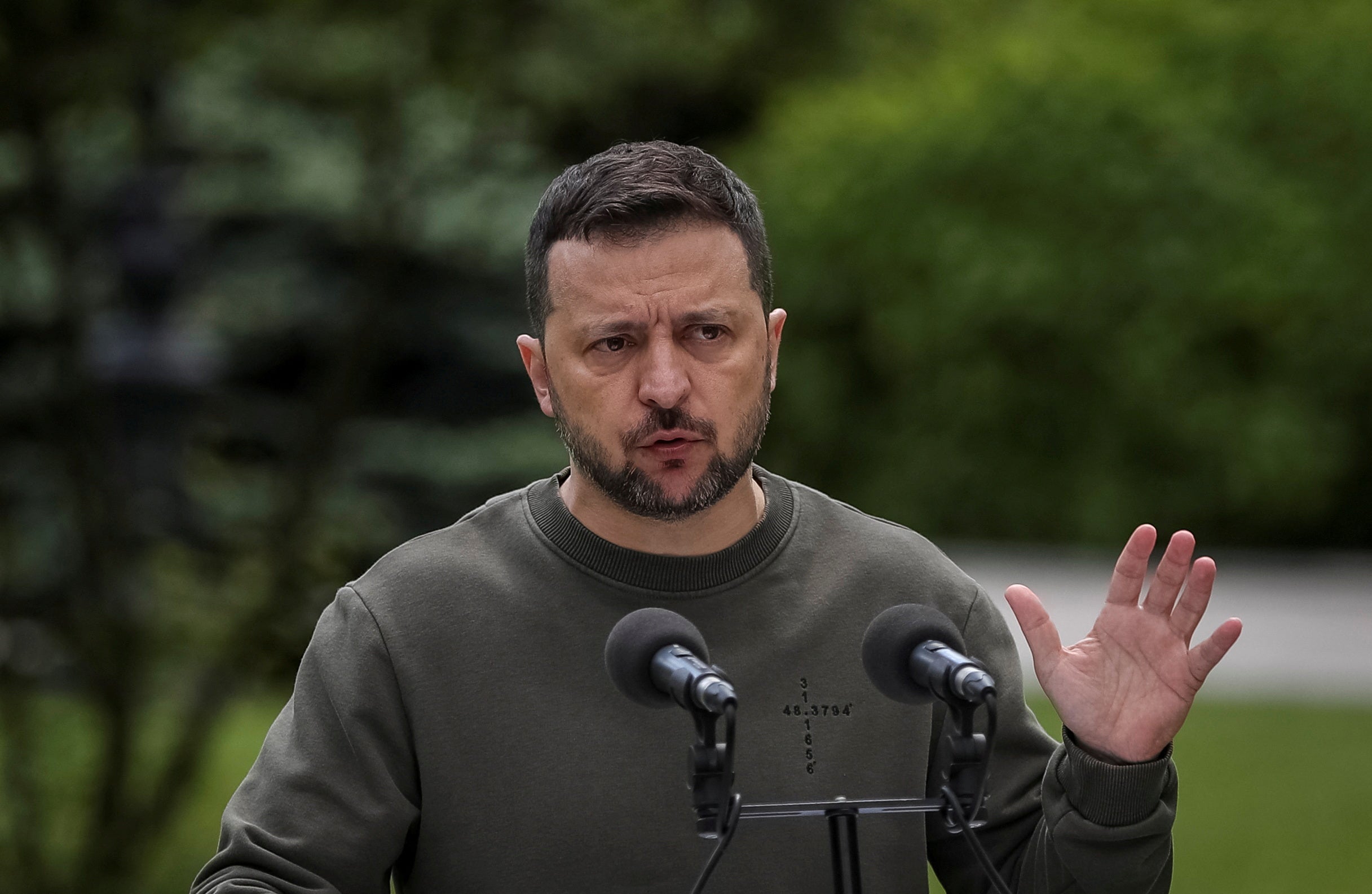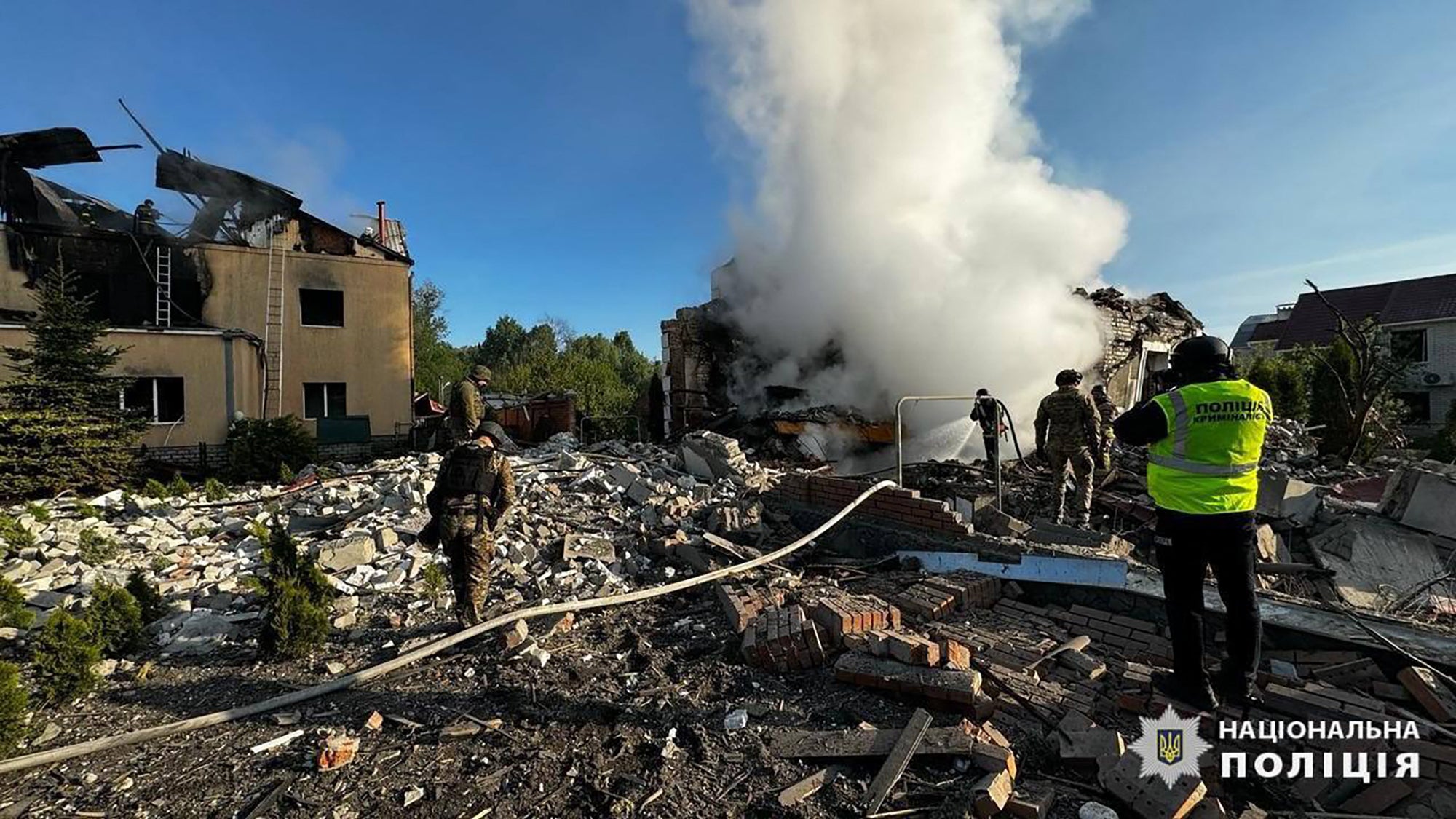Russian forces try to break through Ukraine’s defences around Kharkiv
Kyiv sends reinforcements to the border area and evacuates some citizens – as it repels Moscow’s troops who are seeking to increase the pressure on Ukraine’s second city

Ukraine has sent in reinforcements and evacuated thousands of civilians as Russian forces seek to open up a new front in their invasion by advancing towards Ukraine’s second-biggest city, Kharkiv, which sits around 25 miles from the Russia border.
Ukraine’s defence ministry reported that Russian troops had tried to “break through” defensive lines near a small town called Vovchansk, close to the border, at about 5am – after Moscow’s forces had spent the night shelling the area with highly destructive guided aerial bombs.
A secondary attack was also reported, closer to Kharkiv but along the border, near the town of Oliinykove. Footage posted by DeepState, a Ukrainian war tracker, showed several Russian vehicles in flames near Oliinykove.
Ukrainian military officials have for weeks been warning that Russia was amassing tens of thousands of soldiers on the Russian side of the border in preparation to launch an assault.
And as long-delayed US military aid started to arrive in Ukraine, officials and analysts predicted that Russian forces would try to grab as much land as possible while they still hold an artillery advantage, with the ratio estimated to be seven Russian shells to every Ukrainian one.
But the attack constitutes the first Russian ground assault in the direction of Kharkiv in almost two years. Ukrainian forces liberated the wider Kharkiv region in September 2022, a few months after the Russians invaded. Since then, the fighting has largely been contained to the Luhansk, Donetsk, Zaporizhzhia and Kherson regions to the east and south.


“Russia has begun a new wave of counteroffensive actions in this direction,” Ukraine’s president Volodymyr Zelensky told a news conference in Kyiv. “Now there is a fierce battle in this direction.”
Mr Zelensky has said Russia could be preparing a big offensive push this spring or summer. Kyiv’s forces were prepared to meet Friday’s assault, but Moscow could send more troops to the area, he told reporters.
“As of now, these attacks have been repulsed, [while] battles of varying intensity continue,” the defence ministry said. “To strengthen the defence in this part of the front, reserve units have been sent.”
The governor of the Kharkiv region, Oleh Syniehubov, said that “not a single metre had been lost” in the attack, adding: “The enemy group does not pose a threat to Kharkiv – its forces are sufficient only for provocations in the northern direction.”
But a senior Ukrainian military source, who declined to be named, said that Russian forces had pushed 0.6 of a mile inside the Ukrainian border near Vovchansk. Updates provided by DeepState appear to corroborate this claim.
Tamaz Gambarashvili, head of the Vovchansk military administration, told a local radio station that residents were being evacuated from the border town. Only a few thousand of Vovchansk’s pre-war population of 17,000 remain in the area after more than two years of war.
“Now we are evacuating the population,” Mr Gambarashvili said. “The majority of people leave by their own transport. But at the same time, together with the humanitarian centre, we organise the removal of those locals who do not have their own cars.”
The attack was carried out by a small group of infantrymen “under the cover of armoured vehicles”, the ministry said.
This type of assault has become common all along the front line, as the significant presence of reconnaissance and attack drones makes heavier-duty offensives too risky.
Mr Gambarashvili added that at least two civilians had been killed and five more were injured during heavy Russian shelling of border settlements.
“All the enemy can do is to attack in certain small groups – you can call them sabotage and reconnaissance groups, or something else – and test the positions of our military,” he said on television. Ukrainian officials believe that those carrying out these infantry-led, small-scale attacks are not capable of reaching, or overcoming, a city such as Kharkiv.
Russian president Vladimir Putin, speaking earlier this year, suggested that Moscow would seek to create a “buffer zone” between Russia and Ukraine.
“I do not exclude that we will be forced at some point, when we deem it appropriate, to create a certain ‘sanitary zone’ in the territories today under the Kyiv regime,” Mr Putin said. The Russian president’s remarks came after pro-Ukrainian Russian fighters broke across the border in the area, from Ukraine into the Russian region of Belgorod, where they attacked Russian soldiers. Kyiv has stepped up its strikes on Belgorod this year.
Ukrainian military officials said that, by carrying out these fresh attacks near Vovchansk and further north near Oliinykove, Russian forces had been aiming to push Ukrainian troops as far back as six miles (10km) inside Ukraine as part of an effort to create this buffer zone.
A former Ukrainian officer who runs the open-source intelligence group Frontline Insight, and who is known to have close ties to the Ukrainian military, said the buffer zone would “make it harder for Ukraine to target valuable military assets in Belgorod”.
Join our commenting forum
Join thought-provoking conversations, follow other Independent readers and see their replies
Comments
Bookmark popover
Removed from bookmarks